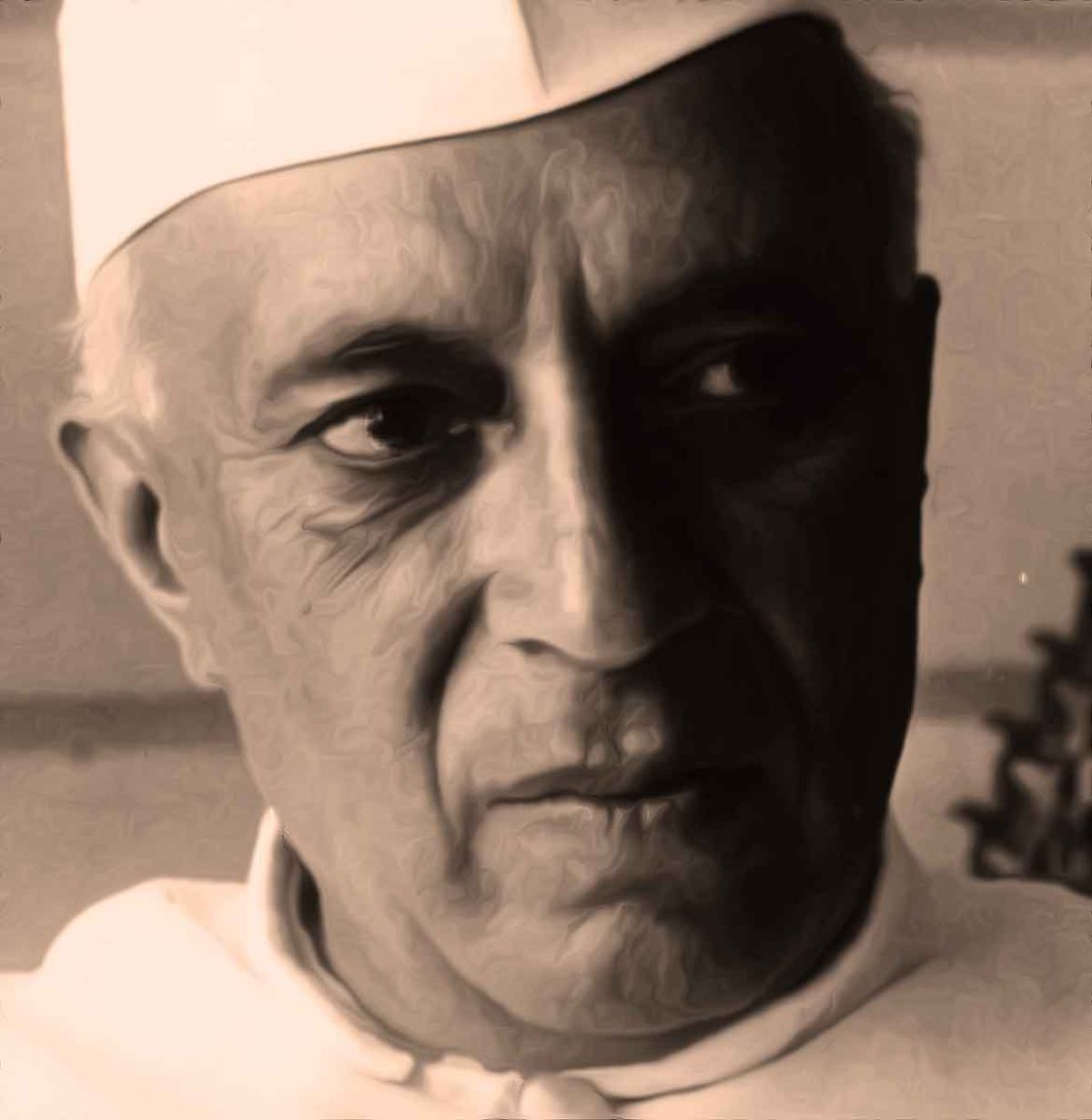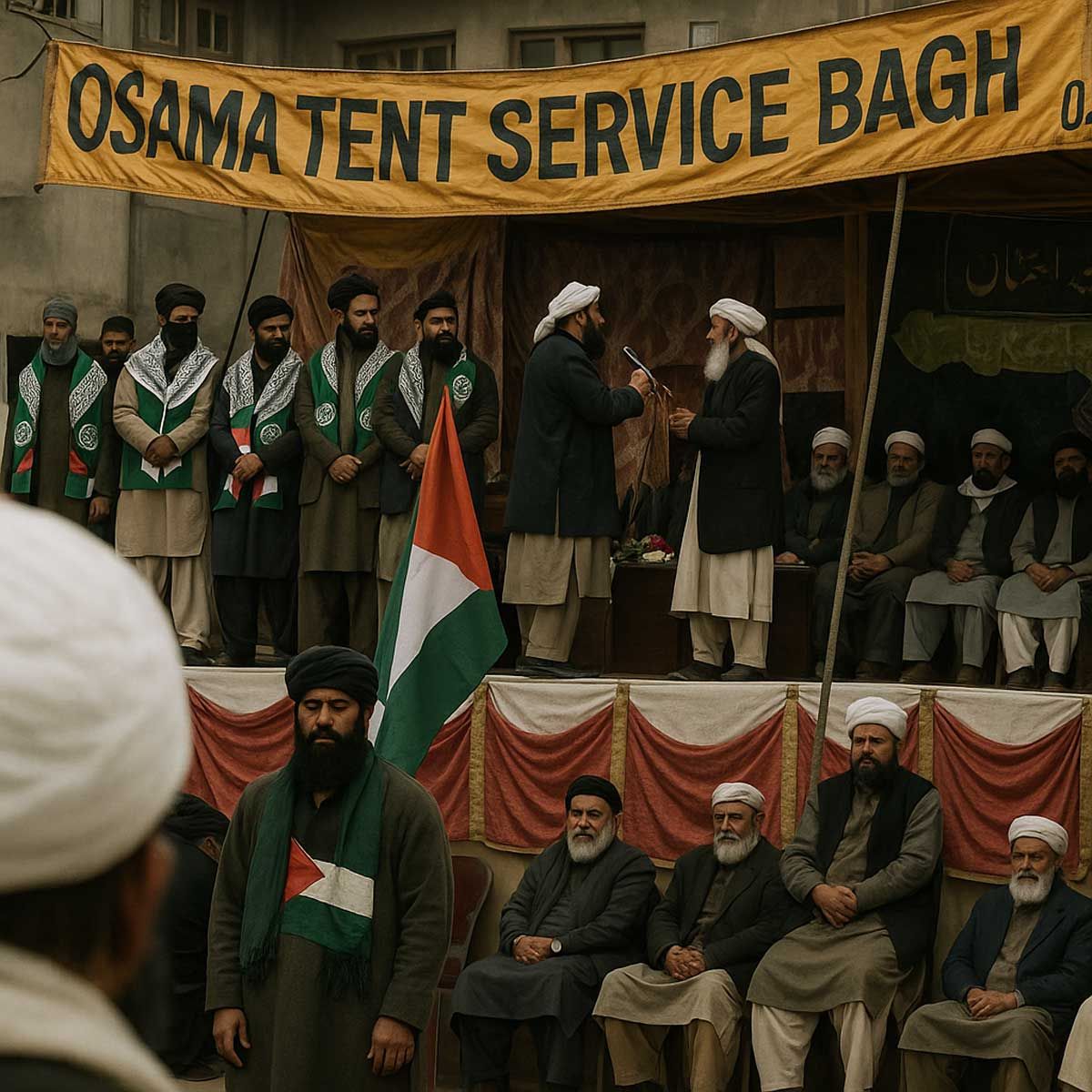Sanatan Articles
Satyaagrah
Written on
Satyaagrah
Written on
Satyaagrah
Written on
Satyaagrah
Written on
Satyaagrah
Written on
JOIN SATYAAGRAH SOCIAL MEDIA
"Instead of leader he acted as a politician and made blunders with the theory of probability": Nehru's flawed attitudes towards Communist China and Tibet, the unsettled border in both Aksai Chin & MacMahon line, his 'rigid line' finally led to 1962 war

"Instead of leader he acted as a politician and made blunders with the theory of probability": Nehru's flawed attitudes towards Communist China and Tibet, the unsettled border in both Aksai Chin & MacMahon line, his 'rigid line' finally led to 1962 war
Nehru failed to negotiate with China on a peaceful settlement of borders, which was so vital to India's security. Doing so was not difficult considering that China at that time was not strong, had numerous external and internal problems to contend with, and was therefore willing for a “give and take”, particularly ‘Aksai Chin—McMahon Line swap’: recognition of McMahon Line by China in return for India's recognition of China's claim on Aksai Chin, with minor adjustments.
|
Status of India-China Broder at Independence
India had borders with Tibet, but not with China. However, after the forcible annexation of Tibet by China in 1950 and its mute acceptance by India, Indo-Tibetan borders became Indo-China borders.
As part of the Great Game that Britain played of check-mating Russia which was expanding south into Asia, Britain made adjustments to the northern boundaries of India—some with the consent of the other party and some without—to keep northern India safe from Russia and China. Britain was adept at cartographic aggression, unilateral cartographic changes and cartographic flip-flops, adjusting the boundaries to suit its strategic requirements, that varied with time. That left free India with a bad legacy of unclear and disputed borders.
Two Major Disputed Border-Regions
Aksai Chin
Aksai Chin (‘The Desert of White Stones’) is to the north of Ladakh. It is located at a height of between 17,000 to 19,000 feet. Its eastern border touches Tibet, and the northern border touches Xinjiang province of China. Aksai Chin was in physical possession of China, and they had built a highway there in the 1950s joining Tibet with Xinjiang [Sinkiang], there being no other land route to connect the two. Aksai Chin was uninhabited, barren and of no strategic or economic importance for India; and considering India had no legally sound claim on it (please see the history below), there was little point, and indeed unwise, for Nehru to act adamant on it, especially when China was prepared for a Tuid proTuo on the McMahon Line in the northeast. General Thimayya had himself stated in
1959 that Aksai Chin was of no strategic significance for India.
Border History related to Aksai Chin
A ‘Boundary Commission’ set up by Britain in 1847 tasked to determine the eastern border of J&K had considered the traditional natural eastern boundary of Ladakh formed by the Karakorum ranges as adequate, pointing out also the possible disputed position of Demchok. Aksai Chin fell beyond the Karakorum ranges into Tibet, which became part of China in 1950.
In 1892 China erected a boundary marker at the Karakoram Pass with an inscription that the Chinese territory began there, and laid claim to the Karakoram Pass, Shahidulla and the tract between the Kuen Lun ranges and the Karakoram ranges, which included Aksai Chin. Britain didn’t mind. All they wanted was that the area should be out of reach of the Russians— in those days Britain was worried about Russia, and not China, which it considered a weak, harmless nation. In connection, the British Foreign Department noted:
“…We had always hoped that they [Chinese] would assert effectively their rights to Shahidulla and the tract between Kuen Lun and Karakoram range [which included Aksai Chin]… We see no occasion to remonstrate with China on account of the erection of the boundary pillar… We favour the idea of getting ‘no mans’ land filled up by the Chinese, subject to the future delimitation of boundaries.”{DW/54-55}
McMahon Line
The McMahon Line was finalised in the Shimla Convention of 1914. The Shimla Convention arranged by the British, to which Tibet and China were invited and were represented by Lonchen Shastra and Ivan Chen respectively, conducted eight formal sessions between 6 October 1913 and 3 July 1914. Sir Henry McMahon, the then foreign secretary of British- India, was the chief negotiator and the British Plenipotentiary at the Convention, assisted by Charles Bell. Lonchen Shastra and Ivan Chen had to get orders and clarifications from Lhasa and Nanjing respectively, which took a long time on account of the distances and conventional communication network; and that was the reason the Convention stretched for so long a period—about 10 months.
The Convention proposed granting China control over Inner Tibet while recognizing the autonomy of Outer Tibet under the Dalai Lama's rule.
Outer Tibet comprised Western and Central Tibet including Lhasa, Chamdo and Shigatse, and areas skirting the British-India frontier; while Inner Tibet included Amdo and part of Kham. Both China and Britain were to respect the territorial integrity of Tibet and abstain from interference in the administration of Outer Tibet. Further Outer Tibet could not be converted into a province of China.
The border between northeast India and Tibet was also discussed and finalised between Tibet and British India during the Convention—it came to be known as the McMahon Line. China was not invited to the discussions on the McMahon Line because it was a boundary settlement between Tibet and India, and not between China and India. It was not a secret negotiation, and China knew about it—and raised no objections.
Ivan Chen initialled the draft Convention on 27 April 2014. However, two days later, on 29 April 2014, China repudiated Chen’s action and refused to proceed with a full signature. It is worth noting that China refrained from full signature not because it had problems with Inner–Outward Tibet per se, but because Tibet and China could not agree on the dividing line between the two. Britain and Tibet signed the Convention on July 3, 1914. {Arpi/126} Even as late as 1947, China, under the Nationalists, had conveyed to the then-Indian government they didn’t recognise the McMahon Line.
The McMahon Line was a thick red line drawn on a double-page map, hence it is inaccurate and susceptible to alternate interpretations and disputes. As proper follow-up protocols that should have used cartographic techniques to identify the location of the agreed line on the ground through a joint survey were not taken up, the line remained inexact, leaving scope for controversial claims. The Indian maps showed it as a dashed/broken- line till 1954 to indicate it was roughly defined but not yet demarcated, that is, marked on the ground consequent to a ground survey. However, after July 1954, the Indian maps began showing it as a solid line indicating it was well-demarcated—at the instance of Nehru!
|
Through the McMahon Line, McMahon had effectively advanced the borders of British-India further north and added 50,000 odd square miles of territory that was till then administered by Tibet, including Tawang, which had the famous Tibetan-Buddhist monastery. Tawang was on the trade- route and the British desired control over it. Though reluctant, Tibet agreed to the giveaway as a bargain for its rights in Outer Tibet.
Later, the Tibetans claimed they had most reluctantly agreed for Tawang and other areas (which till then were theirs), as part of British-India—that is, their depiction to the south of the McMahon Line—as a Tuid pro-Tuo for Britain keeping its part of the bargain: getting China to agree to Outer/Inner Tibet and sign the Convention. Since China had refused to sign the Convention, not only the Tibetans had a right to both Outer and Inner Tibet, but they also had claims on Tawang and other areas relinquished by them then. Soon after Indian independence, Tibet asked India for the return of the territories on its boundary acquired by the British!
With India having agreed to Tibet being a part of China, and not an independent nation, doubt was implicitly cast upon the validity of the treaties which were agreed to by Tibet, but not by China. India effectively did a self-goal through its Tibet policy—Dalai Lama rightly pointed out that to deny the sovereign status of Tibet when the McMahon Line was agreed to in 1914 was to deny the validity of the McMahon Line itself.
What should have been done Post-Independence
India should not have allowed Tibet, which was a buffer with China, to disappear as an independent nation. That blunder having been done, the following sensible steps should have been taken:
- Both India and China should have taken stock of the fact of unsettled borders, and let the public in both countries know of the same, lest there be any wrong impression, false propaganda, and unwarranted politics.
- A team comprising experts from both countries should have done a ground survey and should have tried to define the boundaries.
- Those areas that the expert team failed to resolve could have been left for further discussions at a higher level, where they could have been resolved in the spirit of give and take.
But, were the above sensible steps taken? Unfortunately, no! Contrary to expectations, one is shocked to learn that while China was agreeable to these sensible steps, India was not! Nehru had other ideas—odd, brazen and unreasonable!!
India Unilaterally changed Maps in July-1954
In his memo of 1 July, 1954 to the Secretary General of the Ministry of External Affairs and the Foreign Secretary, Nehru’s directives were [comments in italics within square brackets by author ]: {JNSW/Vol-26/481-2}
“6. In future, we should give up references, except in some historical context, to the McMahon Line or any other frontier line by date or otherwise. We should simply refer to our frontier. Indeed, the use of the name McMahon is unfortunate and takes us back to the British days of expansion.
[But, then, Nehru was not talking of a new, proper, just line/boundary mutually negotiated between independent India and China after junking the colonial McMahon Line of the imperialist/expansionist Britain. He was all for sticking to the colonially laid down lines like McMahon Line—only he didn’t want the legacy of the British names, which lent a negative, expansionist flavour .]
“7. All our old maps dealing with this frontier should be carefully examined and, where necessary, withdrawn. New maps should be printed showing our Northern and North Eastern frontier without any reference to any ‘line’. These new maps should also not state there is any undemarcated territory. The new maps should be sent to our Embassies abroad and should be introduced to the public generally and be used in our schools, colleges, etc.
“8. Both as flowing from our policy and as a consequence of our Agreement with China [which agreement? ], this frontier should be considered a firm and definite one which is not open to discussion with anybody. There may be very minor points of discussion. Even these should not be raised by us. It is necessary that the system of check-posts should be spread along the entire frontier. More especially, we should have check-posts in such places as might be considered disputed areas.
“9. …Check-posts are necessary not only to control traffic, and prevent unauthorised infiltration but as a symbol of India’s frontier. As Demchok is considered by the Chinese as a disputed territory, we should locate a checkpost there. So also at Tsang Chokla…”{JNSW/Vol-26/481-2}
This decision of Nehru was fraught with risks because the new maps of 1954 publicly committed India to a cartographic position that was known to have been of ambiguous provenance. Nehru aligned himself with the maximalist position of the British on the northern borders, whether or not agreed to by China or Tibet in the past, declared them as well-demarcated Indian borders, even where the British had themselves shown the border as undefined. Nehru also formulated a policy where no talks or discussions or negotiations were to be encouraged on boundary issues. Even in new maps, we made blunders. Kuldip Nayar states in ‘Beyond the Lines’:
“To India’s dismay, our maps showed some of our territories as part of China. The home ministry wrote to the states asking them to burn the maps or at least smudge the border with China on the Assam side because they did not exactly delineate the Indian border. The Chinese exploited our confusion and used our maps to Question our claim.”{KN}
Even if one assumes, for the sake of argument, that the new Indian maps were drawn with due care after ascertaining the historical facts and the traditional boundaries, and India had sufficient justification for what it claimed as its boundary; the critical Question is: Were the borders agreed to by the other party? Did India possess agreements, documents and maps to prove its claims? If not, should India not have discussed it with China and tried to convince them of India’s position? India could have taken the maximalist position to start the negotiations. But, negotiations India should have done. A unilaterally-drawn map is a mere cartographic claim, it is not a title to land. It settles nothing, it can have no legal or international acceptance, unless concurred with by the other party. Simply said, it takes two to settle a boundary.
China's stand and willingness for a Negotiated settlement
As brought out above, historically, China had not agreed to any border with India or signed any boundary agreement, except for the borders with Sikkim.
The stand of the Peoples' Republic of China from 1949 onwards was that they wanted to remove the blot of the British imperialist humiliation China had suffered with regard to the borders and on other matters, and rather than accepting the unjust and illegal British-drawn borders, they desired discussions, negotiations and a joint ground survey to settle the borders in a just and mutually acceptable manner in the spirit of give and take, and not with a view to grab area they were not entitled to. They also wanted to dispense with the British-given names, and give the boundaries new Indian–Chinese names.
Chinese communists, having just ascended power in 1949, desired a settled border, especially because they already had several severe headaches—internal troubles, Korea, Taiwan, Tibet and the belligerent US— and didn’t want to add to them.
China settles borders peacefully with other countries
That the above was so was proved by the agreement China finalised with Myanmar (Burma) in 1960—the new Burma-China border is roughly along the McMahon Line, with certain adjustments accepted by both sides. China also settled its boundaries amicably through negotiations with Nepal and Pakistan and signed boundary agreements. India remained the only exception.
Nehru's unreasonable stand and unwillingness to negotiate
China did try on several occasions to settle India-China borders through negotiations and took initiatives in that direction, but what should have happened—a peaceful, negotiated settlement through talks—did not happen, for Nehru had his own ideas, like unilaterally changing the maps (as detailed above), claiming the borders are already settled, and refusing to negotiate.
In July 1952, China proposed a settlement through peaceful negotiations of India’s inherited rights and assets in Tibet, and the related issues, which obviously included the borders. However, Nehru & Co decided in their wisdom not to raise border issues. Why? It might open Pandora’s box and open up the whole border for negotiations. What was the way out? Claim borders were already settled, and therefore there was nothing to negotiate!
The Indian Ambassador to China KM Panikkar had advised: “[If] China raises the issue [of the McMahon Line], we can plainly refuse to reopen the Question and take our stand that the Prime minister took [in his public statement], that the territory on this side of the McMahon Line is ours, and that there is nothing to discuss about it.” {Max/77}
It was this self-deluding approach that led Nehru & Co not to discuss and settle the boundary issue when they signed the only-give-give-and-no-take Panchsheel Agreement with China in 1954.
However, Sir Girija Shankar Bajpai who had been the Secretary-General in the Ministry of External Affairs did not agree with the above stand and pointed out that China had asked for a settlement of pending problems, and that the Chinese “never having accepted the McMahon Line as the frontier between Tibet and us, can hardly regard this frontier as settled. Naturally, they have no intention of raising it until it suits their convenience.”{Max/77}
Nehru had advised the Secretary General of the Ministry of External Affairs on 3 December 1953: “I agree about the attitude we should take up in regard to the frontier, we should not raise this Question [of boundaries]. If the Chinese raise it, we should express our surprise and point out that this [boundaries] is a settled issue...”{JNSW/Vol-24/598}
As per Neville Maxwell’s “India’s China War”:
“India reiterated that her boundaries with China could not be a matter of negotiation, claiming that they stood defined ‘without the necessity of further or formal delimitation’. China replied that ‘this attitude…of refusing to negotiate and trying to impose a unilaterally claimed alignment on China is in actuality refusal to settle the boundary question'; and she warned that while India maintained that position and kept up her ‘unreasonable tangling’, China would ‘absolutely not retreat an inch’ from her own stand. That China was equally and equitably settling her boundaries with her neighbours tended to throw an adverse light on India’s position. Peking prodded at that sore point: ‘Since the Burmese and Nepalese Governments can settle their boundary Questions with China in a friendly way through negotiations and since the Government of Pakistan has also agreed…to negotiate a boundary settlement, why is it that the Indian Government cannot negotiate and settle its boundary Question…’”{Max/214}
India avoided raising the border issue with China following Nehru’s decision—even when Panchsheel was signed in 1954, and later when Zhou Enlai had overlong five rounds of discussions with Nehru between 25 and 27 June 1954{JNSW/Vol-26/365-406}. For over a decade since the independence, Nehru talked with Zhou Enlai on everything under the Sun except the boundary issues. Records Quoted in various books on the subject show that Chinese Premier Zhou Enlai did raise the boundary matter with Nehru several times, but India soft-peddled or avoided the issue. China was also not insistent. No objections or protests from the Chinese were taken to mean their acquiescence to our position. So, as a “strategy”, India maintained silence, and kept mum on the issue.
This is from ‘Beyond the Lines’ by Kuldip Nayar:
“...I was only the home ministry’s information officer and had no official locus standi, but it was obvious that the Polish ambassador was on a mission. He invited me for a chat at his chancery and expected me to convey what he had said to [Gobind Ballabh] Pant [Nehru’s Home Minister]. At the beginning of the conversation, he said that the proposal he would make had the support of all Communist countries, and specifically mentioning the Soviet Union. His proposal was that India should accept a package political deal, getting recognition for the McMahon Line in exchange for handing over control of some areas in Ladakh [Aksai Chin] to China. He said that the areas demanded had never been charted, and nobody could say to whom they belonged. What was being claimed to be India’s was what had been forcibly occupied by the UK. No power could honour ‘the imperialist line’, nor should India insist upon it. Whatever the odds, China would never part with the control of the road it had built. That was the lifeline between Sinkiang and other parts of China, he argued. I conveyed the proposal to Pant who gave me no reaction, his or that of the government.”{KN}
In response to a very long letter Nehru on 26 September 1959, wrote
Chou En-Lai on 7 November 1959:{URL21}
“…As the Sino-Indian boundary has never been delimited and it is very long and very far or comparatively far from the political centres of the two countries, I am afraid that, if no fully appropriate solution is worked out by the two Governments, border clashes both sides do not want to see may again occur in the future. And once such a dash takes place, even though a minor one, it will be made use of by people who are hostile to the friendship of our two countries to attain their ulterior objectives…
“Your Excellency's letter of September 26 contains many viewpoints to which the Chinese Government cannot agree…
“In order to maintain effectively the status quo of the border between the two countries, to ensure the tranquillity of the border regions and to create a favourable atmosphere for a friendly settlement of the boundary question, the Chinese Government proposes that the armed forces of China and India each withdraw 20 kilometres at once from the so-called McMahon Line in the east, and from the line up to which each side exercises actual control in the west, and that the two sides undertake to refrain from again sending their armed personnel to be stationed in and patrol the zones from which they have evacuated their armed forces, but still maintain civil administrative personnel and unarmed police there for the performance of administrative duties and maintenance of order… In a word, both before and after the formal delimitation of the boundary between our two countries through negotiations, the Chinese Government is willing to do its utmost to create the most peaceful and most secure border zones between our two countries, so that our two countries will never again have apprehensions or come to a clash on account of border issues. If this proposal of the Chinese Government is acceptable to the Indian Government, concrete measures for its implementation can be discussed and decided upon at once by the two Governments through diplomatic channels…
“The Chinese Government proposes that in order to further discuss the boundary Question and other Questions in the relations between the two countries, the Prime Ministers of the two countries hold talks in the immediate future…”{URL21}
After several incidents and exchanges of letters between the two countries to diffuse the situation, China wrote in December 1959 repeating its stand on the border but suggesting maintenance of the status quo pending formal delimitation of the border and withdrawal of the armed forces of the two sides by 20km or so on either side and stoppage of patrolling by the armed forces. Nehru strangely continued to maintain the borders were settled and there was nothing to negotiate.
Zhou Enlai, Marshal Chen Yi, Foreign Minister, and a big official Chinese delegation visited New Delhi in 1960 to settle the border dispute. The Chinese position was the same as what Zhou had earlier conveyed in writing to India on several occasions. However, China was reportedly willing to accept the McMahon Line as the boundary in the east—with possibly some adjustments and a new name—as they had done with Myanmar (Burma) provided, in return, India dropped its claims over Aksai Chin. Once this broad framework was agreed to, the officials from the two countries could do a survey and determine the exact alignments of the borders. Unfortunately, adhering to his stated position, Nehru declined.
Finding the deadlock, Zhou then suggested steps similar to his letter of December 1959 to diffuse the situation till an amicable settlement was reached. Nothing came of these.
Chou had come with high hopes after having settled the borders with Burma, but left disappointed—he articulated the Chinese position in a press- conference in Delhi before leaving and expressed his disappointment. Reportedly, Zhou found Nehru’s adamant stand on Aksai Chin inexplicable and unexpected for several reasons: (a) India had never occupied or ruled or set its foot in Aksai Chin; (b) in the opinion of China, India had no valid and legal ground to lay claim on it; (c) it was barren and nothing grew there, and (d) it was of no strategic or economic importance for India.
Wrote Walter Crocker in ‘Nehru: A Contemporary's Estimate’:
“At all events, by 1956-57 Chinese were highly suspicious of India. By the time the Indian Forward Policy was launched, they were convinced of trickery and bad faith… There is evidence that after his talks with Nehru in 1954 and in 1955, increasingly in 1956, and again in 1960, Chou En-lai came to feel that he had got little understanding with Nehru and that Nehru was not straight. Nehru’s manner and indirectness had over the years caused more than one interlocutor to feel like that… According to a foreign minister of a certain Asian country, Chou En-lai, speaking about the Sino-Indian boundary dispute, told him that Nehru was impossible to negotiate with, being both unreliable and impenetrable…”{Croc/85}
Apparently, the ‘wise’ and the ‘self-proclaimed-expert-in-international-affairs’ Nehru thought that by being assertive about what India had unilaterally decided were its boundaries, the ‘not-so-wise’ China would ultimately buckle and agree to India’s unilateral claims! It didn’t matter that India had no undisputed maps and mutually agreed-on documents to back up its assertiveness. Nehru’s assertiveness and adamance were misplaced—he should have shown that while dealing with the Tibet issue.
Even after the first phase of the 1962 India-China war that lasted four days (20–23 October 1962), China issued a statement and Zhou also wrote to Nehru on 24 October 1962 setting out the terms of peaceful settlement of the border dispute: both parties withdraw 20km from the line of actual control and disengage; the PMs of the two countries engage in friendly settlement of the dispute. India Questioned what China meant by the line of actual control and wanted it to be the position as on 8 September 1962, while China, in its response of 4 November 1962, clarified it to be the position as on 7 November 1959, that is, the McMahon Line in the eastern sector—even though China had not accepted that line—and the traditional line in the other sectors, emphasising what China offered met the India conditions of “decency, dignity and self-respect” and would not prejudice claims of either party, which would be settled through negotiations. This also meant that China was not taking advantage of the territories it had gained meanwhile after the first phase of the 1962 India-China war.
India did not agree to reiterating that the line of actual control should be the position as on 8 September 1962. However, those were precisely the unacceptable Indian positions as on 8 September 1962 in what China considered to be its territory that led to the conflict on 20 October 1962 in the first place, and agreeing to the same would have meant China did something wrong in demolishing those positions it considered illegal. India remained adamant. China considered India’s stand to be highly unreasonable.
After the initial four days of fighting (20–23 October 1962), there was a lull in the fighting of about three weeks till 13 November 1962. Indian forces had meanwhile regrouped and they attacked the Chinese positions on 14 November 1962. China counter-attacked and by 20 November 1962 (within a week) the whole of NEFA was under Chinese control, and they were at the gates of Assam.
China declared a unilateral ceasefire on 21 November 1962. All nations, including of course India, were stunned by this sudden and unexpected turn. The terms were the same as what China had offered earlier on 24 October 1962 after the first round of fighting for 4 days since 20 October 1962. However, the main difference was that this was unilateral—China announced it would carry out its part of the obligation whether or not India agreed, that is, it would withdraw its forces 20km away from the line of actual control as on 7 November 1959. However, it reserved the right to strike back should India attack or try to cross the line of actual control to reoccupy the positions that were never in its territory.
India ceased fire knowing it could not fight on. However, sticking to its old stand, India did not agree, nor did it make an effort, to finally resolve the border dispute once and for all through talks and negotiations, for which China was ready!
Nehru had admitted his mistake, yet...
This is what Nehru had himself admitted in the Parliament in 1959: “Seven or eight years ago I saw no reason to discuss the frontier with the Chinese Government because, foolishly if you like, I thought there was nothing to discuss .”{AS/154}
Time and tide wait for none. Who is paying for the missed opportunities?
REFERENCE:
Unabridged Edition, April 2019 Revised & Enlarged to 127 MAJOR BLUNDERS by Rajnikant Puranik | Book can be purchased from www.rkpbooks.com
 Support Us
Support Us
Satyagraha was born from the heart of our land, with an undying aim to unveil the true essence of Bharat. It seeks to illuminate the hidden tales of our valiant freedom fighters and the rich chronicles that haven't yet sung their complete melody in the mainstream.
While platforms like NDTV and 'The Wire' effortlessly garner funds under the banner of safeguarding democracy, we at Satyagraha walk a different path. Our strength and resonance come from you. In this journey to weave a stronger Bharat, every little contribution amplifies our voice. Let's come together, contribute as you can, and champion the true spirit of our nation.
 |  |  |
| ICICI Bank of Satyaagrah | Razorpay Bank of Satyaagrah | PayPal Bank of Satyaagrah - For International Payments |
If all above doesn't work, then try the LINK below:
Please share the article on other platforms
DISCLAIMER: The author is solely responsible for the views expressed in this article. The author carries the responsibility for citing and/or licensing of images utilized within the text. The website also frequently uses non-commercial images for representational purposes only in line with the article. We are not responsible for the authenticity of such images. If some images have a copyright issue, we request the person/entity to contact us at This email address is being protected from spambots. You need JavaScript enabled to view it. and we will take the necessary actions to resolve the issue.
Related Articles
- Anuj Dhar claims that Subhas Chandra Bose was suspected of being ‘poisoned’ after ouster from the post of Congress president
- Father of the Nation! Absolutely not. Mohandas Karamchand Gandhi was not the father of the nation either officially or otherwise
- "Achievement in space, politics on Earth": While ISRO's Chandrayaan-3 etches a new chapter in space history, the Congress's rush for credit speaks volumes, amidst lunar triumphs, memories of overlooked funding pleas during the UPA era cast long shadows
- Bhagat Irwin Gandhi - Martyrdom of Shaheed Bhagat Singh (Some Hidden Facts)
- In Search of a Culprit - Genesis and Growth of Nehruism Vol 1
- On 16th Aug 1946, during Ramzan's 18th day, Direct Action Day aimed to provoke Muslims by mirroring Prophet Muhammad's victory at Badr, Gopal 'Patha', the Lion of Bengal, heroically saved Bengali Hindus & Calcutta from a planned genocide, altering history
- How Nehru's Govt helped China in conquering Tibet and let go of it's centuries old friend
- A revolutionist freedom fighter who the British Raj framed for murder
- "It's hard for the same people who put you in the ditch to pull you out of it": Nehru's Panchsheel blunder was born in sin to put the seal of approval upon the destruction of an ancient nation which was associated with India spiritually and culturally
- Tata Group officially takes over the airline from the union government, says we are committed to making it a world-class airline: ‘Golden age of Air India lies ahead’
- Nehru lost election and became first Prime Minister of free India: All thanks to miraculous Gandhi
- Mysterious death of Pandit Deen Dayal Upadhyaya, whose growing popularity was a threat to Congress
- "A foreign lady and the child born to her can never be faithful to the Nation": Word of Chanakya echoed when Nehru refused to allow Maharaja Yeshwantrao Holkar's only son Richard Holkar to succeed him as his mother and grandmother were Americans
- Gandhi emphasized that he won't salute Indian National Flag if Charkha is replaced by Ashoka Chakra and wanted British flag added to it
- The untold story of Maharashtrian Brahmin genocide committed by Congress after Gandhi’s assassination in 1948





















